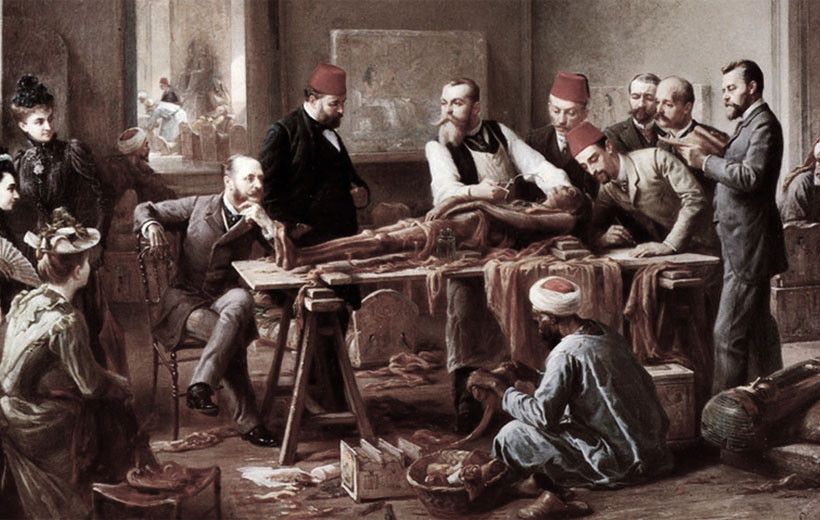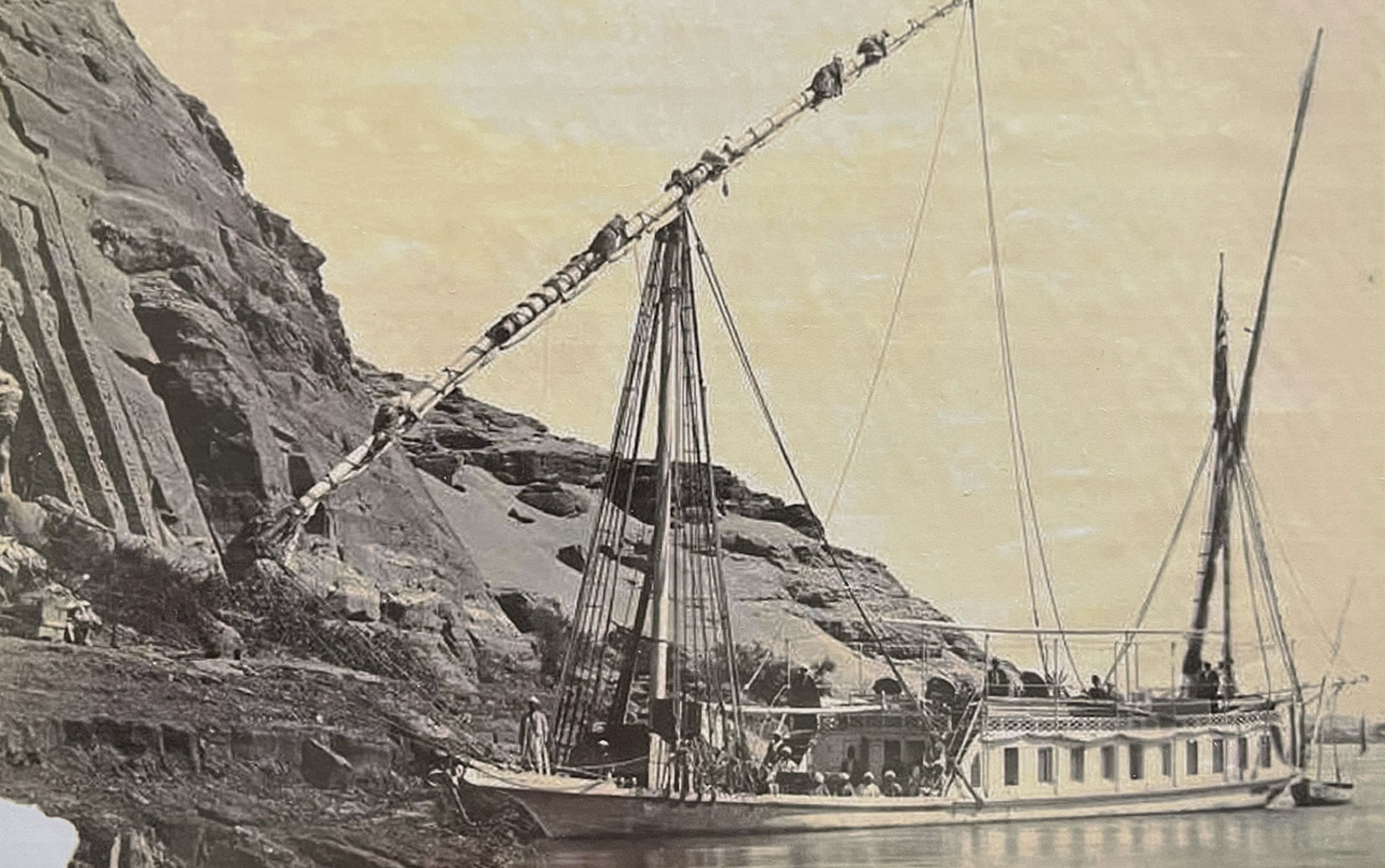History
The Dahabiya Tale
The 19th-Century Egypt Craze
Egypt ranks among the world’s oldest tourist destinations. Like Greece and Italy, it offers an abundance of ruins and historical sites. Legends and mysteries surrounding the pharaonic remains have captivated people throughout history. In the 19th century, it was rare to find a household in the upper echelons of society not adorned with Egyptian accessories or even antiquities.
One could indeed speak of a veritable »Egyptian craze«, which gave rise to somewhat absurd fads, such as the occasional fashionable hosting of »mummy unwrapping parties«. Museums filled with Egyptian relics, while Art Deco and Art Nouveau drew inspiration from the forms of ancient Egypt. In pharmacies, there were even powders available made from ground Egyptian mummies. Newspapers and the travel accounts, highly popular at the time, further fueled the fascination.

The Rise of Tourism: From Dahabiyas to Steamships
The Rise of Tourism: From Dahabiyas to Steamships
Numerous notable figures visited Egypt, journeyed upon the Nile, and chronicled their experiences. Among them were Napoleon Bonaparte, Jean-François Champollion, and Amelia Edwards. Other famous names include Gustav Flaubert, Agatha Christie, Lord Carnarvon, and Howard Carter. All of them navigated the Nile’s waters, and despite their diverse backgrounds, they shared a common fascination with the mighty river.
The Suez Canal opened in 1869. European tourists soon showed a growing interest in organized tours. That’s why the English entrepreneur Thomas Cook began offering guided trips to Egypt from 1870. For transport and accommodation, he initially relied on wooden sailing ships — the traditional dahabiya — and later, steamships. As the dahabiya was reliant on the wind, it was often rowed or pulled along the banks. This explains the distinctive feature of particularly long bows, known as the »noses«. A typical journey from Cairo to Luxor would last at least a month, if not longer.
The Fall and Revival of Traditional Nile Sailing
The form of the dahabiya certainly bears a resemblance to the ancient Egyptian vessels, as can be seen in many of the historical records. Their current shape owes much to the ship models of the Ottoman nobility, who began using these boats on the Nile from the 16th century onwards.
From the 1950s onwards, large motor vessels and cruise ships gradually supplanted the smaller, slower Nile sailboats. The traditional dahabiyas gradually disappeared, either being scrapped or left to decay. Today, only five original, operational vessels remain on the Nile, with all others being modern replicas – certainly with some advantages, but also many drawbacks. The increased comfort (with large private bathrooms in each cabin, air conditioning, glass facades, and pools on deck) makes the ships heavier and less manoeuvrable.
Often, they must be towed, and their considerable weight and corresponding draft limit their ability to dock at all landing spots. The Eugénie was rescued in the 1990s by our dear friend Didier, who painstakingly restored her. He himself sailed the Nile for over 30 years – always with friends, acquaintances, and many guests who eventually became friends. The Eugenie was his pride and joy, a piece of Egyptian home. We are grateful for his friendship and for the privilege of continuing to operate the “Eugenie.”
